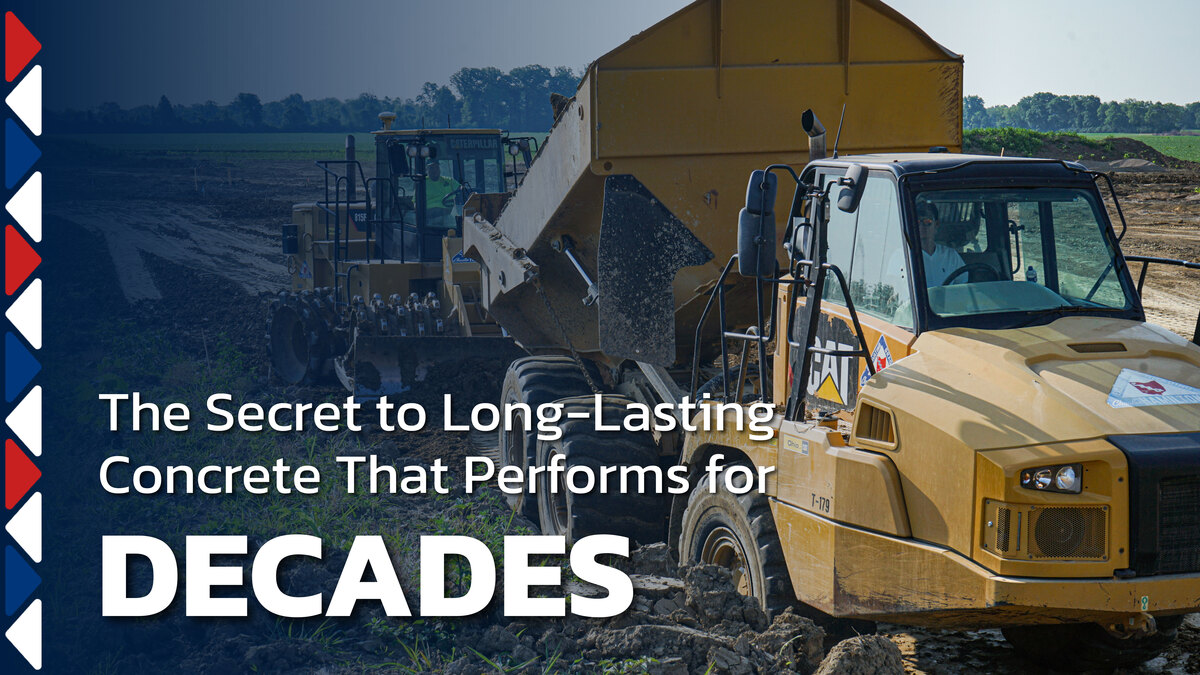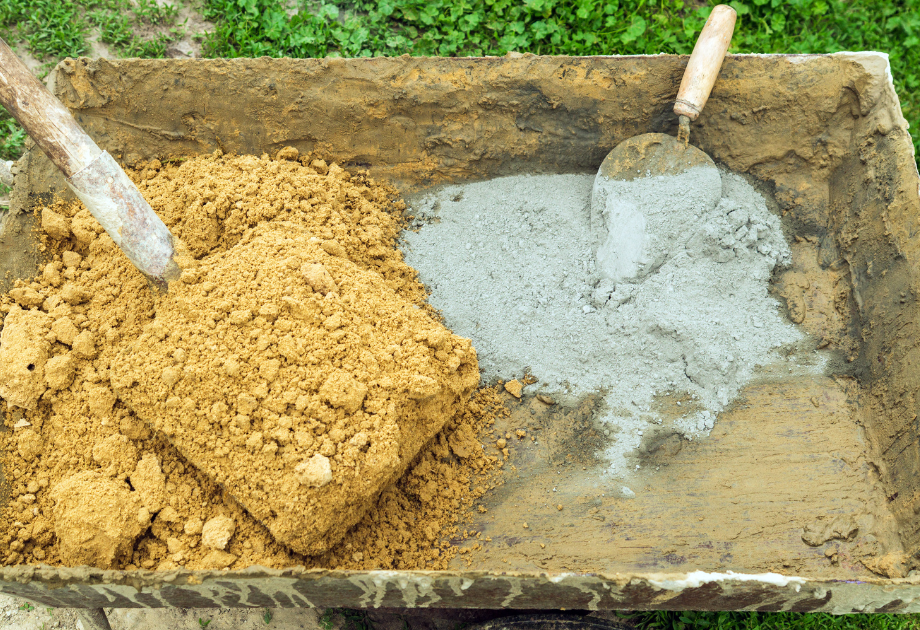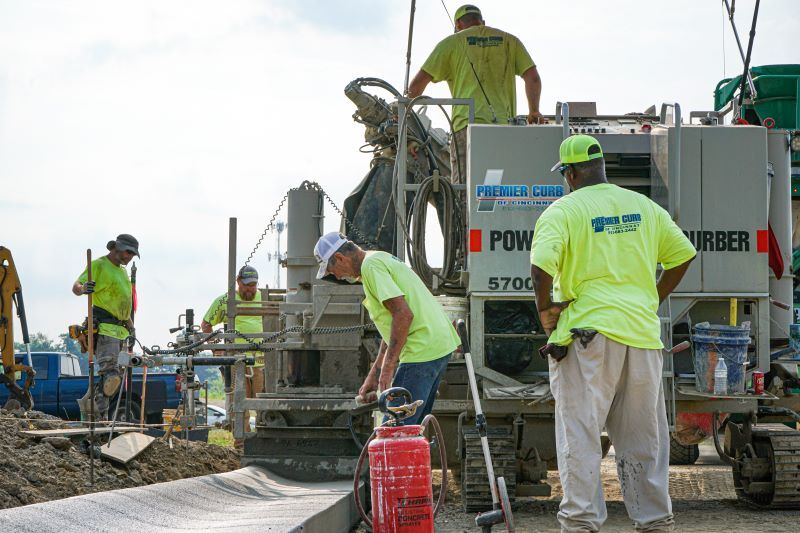The Secret to Long-Lasting Concrete That Performs for Decades

Concrete has a reputation for being tough. And it should—when it’s done right. But concrete only performs as well as the choices behind it. If the wrong materials are used, or if someone cuts corners during the pour, what starts out solid can start falling apart way sooner than expected.
We’ve been called in to fix it: cracks that show up before the first winter, surface scaling that makes a project look ten years old in two, and slabs that just don’t hold up under pressure. That’s not the kind of work we do at Charles H. Hamilton’s Premier Curb of Cincinnati.
This blog lays out what exactly goes into making durable concrete, what to watch for, and how our crews make sure the work you’re paying for actually lasts.

Concrete Strength Starts with the Right Mix
When people talk about concrete, they usually start with pounds per square inch (PSI). It’s important—but it’s not everything. A concrete PSI rating tells you the potential strength of the mix—not how it will actually perform once it’s poured and cured.
Getting concrete to hit its stride depends on how it’s mixed, poured, and cured. Water-to-cement ratio has to be just right. Too much water? You’re weakening the slab. Too little? It won’t set right. And curing? That’s the part no one brags about, but makes or breaks the compressive strength of the final product.
Here’s a number worth remembering: properly cured concrete reaches about 70% of its strength in the first 7 days—but it can take 28 days or more to reach its full rating. At Charles H. Hamilton, we plan for proper curing time and conditions, building it into the schedule—not rushing the process or leaving it to chance.
Choosing the Right Mix Matters More Than You’d Think
If you’re working with a crew that only talks about cement, you’re missing most of the picture. Cement is just one part of the puzzle. The rest? Aggregates and additives—and they matter more than you might expect.
Aggregates (rock, sand, gravel) make up 60% to 75% of the volume in a mix. If they’re dirty, mismatched, or poorly sized, they can weaken the whole structure. And in climates like ours, freeze-thaw cycles can do real damage. That’s where concrete additives for strength—like air-entraining agents—come in. They help the slab flex with temperature swings without cracking apart.
We tailor the concrete mix to fit the demands of the project—factoring in things like load requirements, climate, and placement conditions. Heavy traffic? Harsh weather? Long span without joints? We’ve got a plan for that. And that’s part of what sets us apart—we don’t default to “standard.” We build to last.

A Great Mix Can Still Fail Without the Right Crew
We’ve seen beautiful specs destroyed by rushed work. Even the best mix can’t make up for a bad pour.
Good concrete work starts before the truck shows up. Subgrade prep, proper forms, and solid communication are everything. Once the pour begins, pacing and timing matter just as much. Finish too soon, and you trap bleed water at the surface. Wait too long, and the surface won’t bond right. Either way, the result looks bad and performs worse.
Our crews are trained to get it right. That means cleaner pours, tighter finishes, and fewer problems down the line. It also means we don’t disappear when the slab sets. We monitor curing and follow up on performance, because the longevity of concrete isn’t something we leave to luck.
Work That Lasts
The quality of a concrete job isn’t just in how it looks on pour day—it’s in the steps that follow. Curing might not be the most visible part of the process, but it has a measurable impact on long-term performance. It’s also where a lot of crews cut corners.
We make curing a priority. Moist curing, done correctly, can improve compressive strength by as much as 50% compared to concrete that’s left to dry out. That strength increase means fewer early cracks, better load resistance, and a longer-lasting slab.
Jointing is just as important. Without proper cuts, concrete will crack where it wants to—not where it should. That’s why we follow the rule: joints should reach at least 25% of the slab depth to help manage internal stress. These small decisions are part of the reason our work holds up for decades—not just a few seasons.
Bad Concrete Happens When Corners Get Cut
Early failure doesn’t come out of nowhere. Most concrete problems can be traced back to preventable issues that get overlooked when speed or cost takes priority over quality. Here’s what that usually looks like:
- Skipped or rushed curing: Concrete needs time and moisture to reach full strength. Cutting this short weakens the slab from day one.
- Poor subgrade preparation: If the base isn’t stable, the slab won’t be either. Voids, soft spots, or inconsistent compaction all lead to cracks and settling.
- Bad timing on finishing: Working the surface too early or too late can trap water, cause scaling, or create weak surface layers.
- Wrong reinforcement—or none at all: Reinforcement should match the job specs, not get skipped for convenience.
- No weather planning: Hot sun, cold temps, and fast-moving storms all affect concrete performance. Timing matters.
- Inadequate jointing: If stress has nowhere to go, it’ll find a weak point—and crack it.
We don’t let those issues slide. At Premier Curb of Cincinnati, our crews come prepared with site-specific plans, job-tested techniques, and real accountability on the ground. Every step is intentional—from prep to pour to cure—and that discipline is a big reason our concrete lasts.
Build Something That Lasts with Charles H. Hamilton
Durability doesn’t happen by chance. It’s the result of smart planning, honest work, and attention to every step—from mix design to curing discipline. That’s how we approach every project at Premier Curb of Cincinnati.
We’ve delivered durable concrete solutions across a wide range of commercial jobs, and our work continues to hold up under pressure—literally. Clients trust us because we don’t just show up and pour. We stay focused on performance, safety, and long-term results.
Want to see what that looks like in action? Start here or explore our concrete and curb services.
Don’t wait until performance issues show up—contact us to put durability on the schedule now. Let’s make sure your next project stands the test of time.

